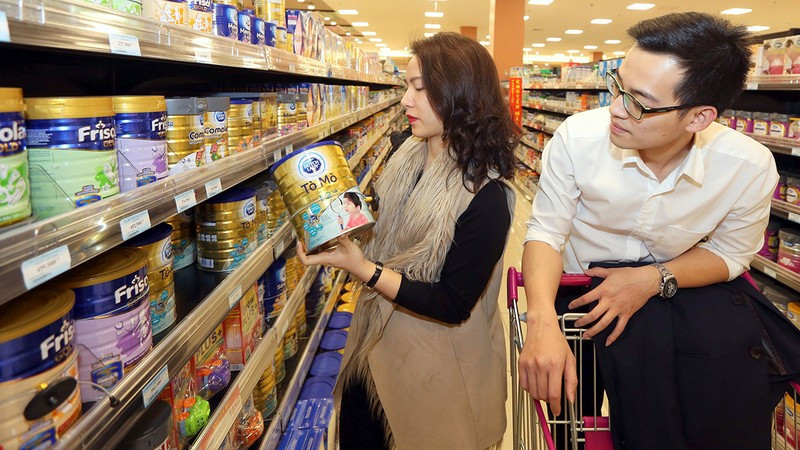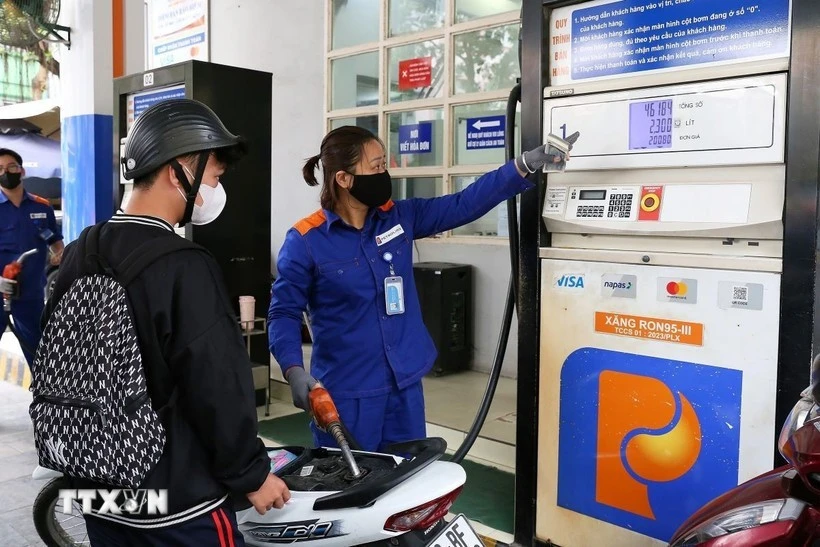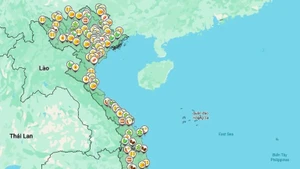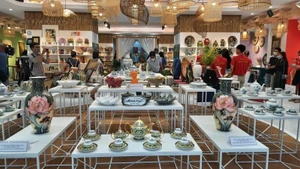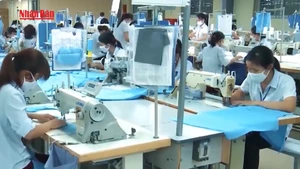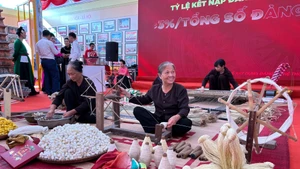As the Tet (Lunar New Year) festival is just around the corner, high-quality Vietnamese products, regional specialties, and OCOP products are being sold at supermarkets and stores in Hanoi City.
Thu Huyen, a shopper from Nam Tu Liem district in Hanoi, shared that in the past, she often bought imported candies and fruits as Tet gifts for her parents. However, due to concerns that often imported goods do not have invoices or documents clarifying their origins, this year’s Tet festival, she decided to add Vietnamese products to her shopping cart.
“Made-in-Vietnam goods are reasonably priced, and their designs and quality are also more beautiful and delicious than before. Especially, I can be assured about their origin,” Huyen said.
As a consumer who prefers Vietnamese products, Hoang Anh from Khuong Trung ward, Thanh Xuan district in Hanoi, said that most of the appliances in her family are domestic products.
“From essential foods to technological products, chemicals, especially clothes, I choose domestically produced goods whose prices are reasonable, quality is improved, and origin is clear,” Hoang Anh said.
It can be seen that Vietnamese products have now convinced customers thanks to their improved quality and design. Domestic products are available in both big and small supermarket chains, as well as convenience stores.
Accordingly, surveys at popular supermarkets in Hanoi, such as Co.opmart, Winmart, and Hapro, show that more than 90% of products on sale are Vietnamese. The figure is around 65-97% at major retail channels such as AEON, Mega Market, and Big C. Vietnamese goods are now popular at local markets and convenience stores as their coverage rate reaches 70%-80%.
This is the result of the efforts made by Vietnamese businesses to apply advanced technology, save costs, and improve product quality and design, thereby creating trust among customers.
 |
| Visitors are introduced to One Commune, One Product (OCOP) goods of Hanoi and other localities at an event host by the Ministry of Industry and Trade (Photo: VNA) |
According to the Hanoi Department of Industry and Trade, in 2023, the department worked with more than 30 provinces and cities to implement many practical activities to promote the consumption of Vietnamese goods in Hanoi and other localities.
In particular, the department supported businesses in Quang Tri, Bac Kan, Tay Ninh and Hai Duong provinces, to gain access to distribution systems in Hanoi, and to promote their products in the capital city. More than 40 trade fairs and goods promotion events were held in Hanoi and other provinces last year, with 3,000 products from 30 provinces being introduced to local customers.
These activities have contributed to promoting the ‘Vietnamese people prioritise using Vietnamese goods’ campaign while connecting Hanoi businesses and distributors with stable, quality sources of goods from provinces and cities to meet the diverse needs of local consumers.
The strong participation of businesses has helped to widely spread Vietnamese brands, such as Vinamilk, TH True Milk, Trung Nguyen Coffee and Loc Troi Rice, not only in the domestic market but also international market.
Despite these remarkable results, Vietnamese products still face difficulties in winning customers’ favour. Some businesses have not yet paid due attention to building and protecting the brands of their products and goods.
On the other hand, there is still unfair competition among domestic enterprises and violations of goods origin, which have posed negative impacts on domestic enterprises.
In addition, the slow application of science and technology into production in some businesses has affected the improvement of the quality of Vietnamese goods.
Not to mention the difficulties in the management and control of the quality of goods, in the context when fake goods, smuggled goods, and products with poor quality become rampant e-commerce platforms.
These are the reasons affecting the competitiveness of Vietnamese products against imported goods, thus showing down the implementation of the ‘Vietnamese people prioritise using Vietnamese goods’ campaign.
Given the situation, the Industry and Trade sector continues to strengthen market management and product prices, curb counterfeit goods, prevent smuggling and trade fraud, contribute to stabilising prices of essential goods and ensure social security.
The sector has also worked to support businesses in developing and maintaining brands.
For their parts, businesses need to renovate their designs, foster the application of advanced technology, increase labour productivity, lower costs, and improve product quality, thereby completing their chain from production and processing to distribution to customers.
